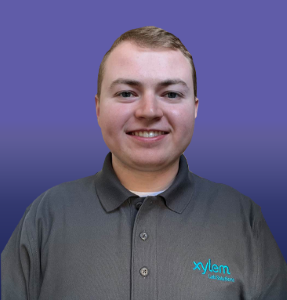 Analysis of Volatile Organic Compounds by Purge and Trap (P&T) and Gas Chromatography/Mass Spectrometry (GC/MS) Using Nitrogen as a Purge Gas
Analysis of Volatile Organic Compounds by Purge and Trap (P&T) and Gas Chromatography/Mass Spectrometry (GC/MS) Using Nitrogen as a Purge GasNew Organic Monitoring Techniques
Poster Presentation
Presented by J. Woodside
Prepared by C. Elmore
OI Analytical - Xylem, 777 Graham Road, College Station, Texas, 77845, United States
Contact Information: [email protected]; 979-446-1576
ABSTRACT
Helium has been successfully used as a purge gas for volatile organic analysis for many years because it is inert and works extremely well for P&T concentration. Traditionally, VOCARB traps or mixed bed traps containing Tenax, silica gel, and carbon molecular sieve have been used. Despite the success of this pairing, Helium is a non-renewable resource and supplies will eventually run out. Decreasing availability has caused significant price increases and long lead times for Helium cylinders, prompting many labs to look for an alternative source.
Nitrogen is inert, plentiful, and relatively inexpensive making it a reasonable alternative purge gas. However, we have found that the VOCARB and mixed bed traps do not work as well when using Nitrogen instead of Helium as a purge gas. Increased tailing has been observed as well as more compounds having high Relative Standard Deviation (RSDs) in the calibrations. It is best to avoid manual integrations because of tailing and the need for linear regression when calibration RSDs are too high.
Although the mixed bed trap has worked very well in the past, switching from Helium to Nitrogen resulted in a 30-40% drop in response because of erratic behavior within the inlet caused by silica gel. Lower concentrations are then less responsive and some compounds also tend to have high RSDs. No amount of method parameter changes remedied this situation. Therefore, a new mixed bed trap was developed in order to achieve results similar to the older mixed bed trap.
This poster will present data for EPA Method 8260D. Calibrations using the older traps and the new one were analyzed using Helium and Nitrogen as purge gases.

